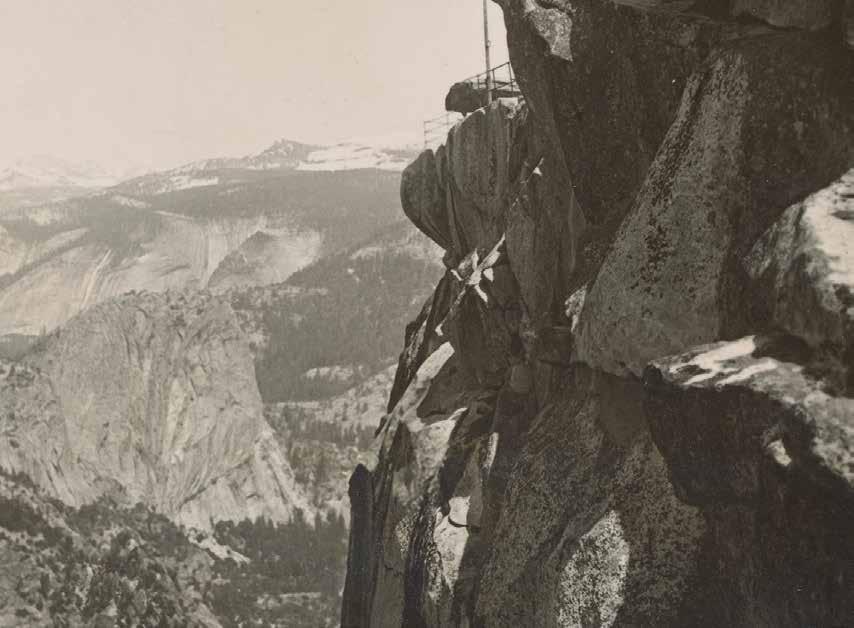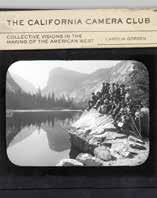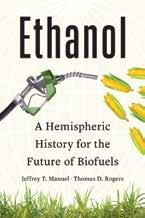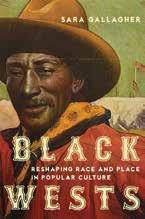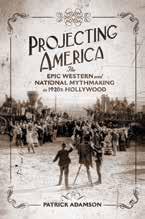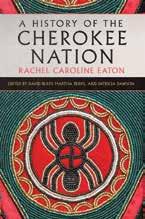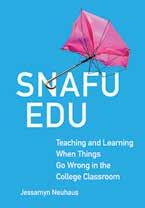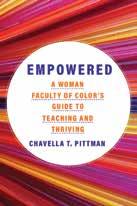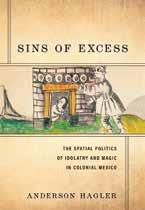

Congratulations to Our Recent Award Winners
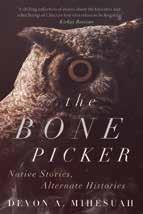
★ 2024 Gold Winner Foreword INDIES
THE BONE PICKER
Native Stories, Alternate Histories By
Devon A. Mihesuah
$19.95 Paperback 9780806194677

★ 2024 Honorable Mention Foreword INDIES
INDIGENOUS WAR PAINTING OF THE PLAINS
An Illustrated History By Arni Brownstone
$60.00 Hardcover 9780806193649
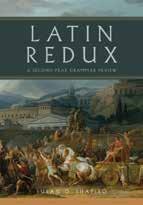
★ Ladislaus J. Bolchazy Pedagogy Book Award
The Classical Association of the Middle West and South
LATIN REDUX
A Second-Year Grammar Review by Susan O. Shapiro
$29.95 Paperback 9780806193915
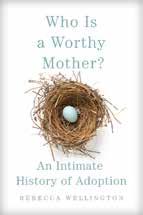
★ Best Memoir Feathered Quill Book Awards, Third Place
WHO IS A WORTHY MOTHER?
An Intimate History of Adoption by Rebecca Wellington
$24.95 Hardcover 9780806193700

★ Outstanding Academic Title Choice Magazine
UNDER FIRE AND UNDER WATER Wildfire, Flooding, and the Fight for Climate Resilience in the American West by Bruce E. Cain
$29.95 Hardcover 9780806193205
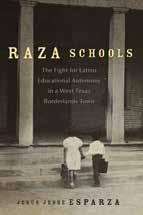
★ Book of the Year Award American Association of Hispanics in Higher Education
RAZA SCHOOLS
The Fight for Latino Educational Autonomy in a West Texas Borderlands Town by Jesús Jesse Esparza
$95.00 Hardcover 9780806192710
$29.95 Paperback 9780806192727

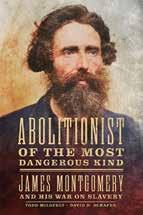
★ 2025 Great Reads from Great Places
National Book Festival
ABOLITIONIST OF THE MOST DANGEROUS KIND
James Montgomery and His War on Slavery by Todd Mildfelt and David D. Schafer
$45.00 Hardcover 9780806192901
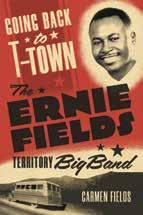
★ 2024 Best Historical Research in Recorded Jazz Music Association for Recorded Sound Collections Awards for Excellence, Certificate of Merit
GOING BACK TO T-TOWN
The Ernie Fields Territory Big Band by Carmen Fields
$26.95 Hardcover 9780806191843
$21.95 Paperback 9780806195445
“The one who can interpret Oklahoma can grasp the meaning of America in the modern world.”
–Angie Debo
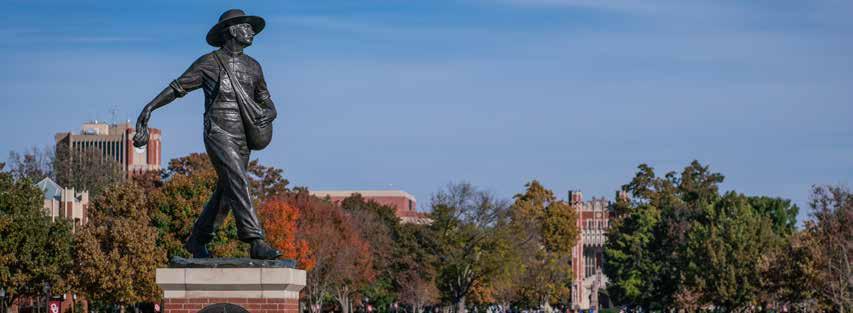
Since 1928, the University of Oklahoma Press has published books of scholarly and general interest that tell Oklahoma’s story and the intertwined stories of the 39 federally recognized tribes within the state’s borders. The Press brings regional knowledge to a broad readership, placing Oklahoma in national conversations and the iconic interlocking OU brand on bookshelves around the world.
Oklahoman Angie Debo wrote in a 1940 OU Press book that “the one who can interpret Oklahoma can grasp the meaning of America in the modern world.” A lot is still right about that, and to know Oklahoma, you must read OU Press books.
Since its founding the Press has shown new worlds to general readers the world over. The first university press book ever chosen by the vaunted Book of the Month Club was Osage writer John Joseph
Matthews’s Wah’Kon-Tah (1931).
When outsiders come to tell Oklahoma’s stories, OU Press books are ready to guide them. Ken Burns, the country’s most famous documentarian, depended on Sanora Babb’s novel Whose Names Are Unknown, which OU Press published decades after it was rejected by a big commercial publisher. When Martin Scorsese hit on Oklahoma’s Indigenous history for Killers of the Flower Moon, there was Osage writer Charles H. Red Corn’s A Pipe for February to help guide the way.
University press books about and from Oklahoma help readers find their home. In this and all catalogs, OU Press carries that legacy toward its 100th anniversary with grit and excellence.
OKLAHOMA’S PUBLISHER since 1928
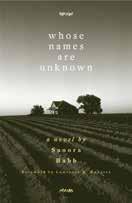
THERE’S ONLY ONE UNIVERSITY OF OKLAHOMA PRESS
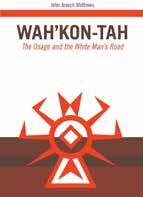
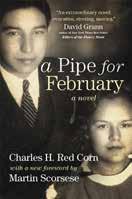
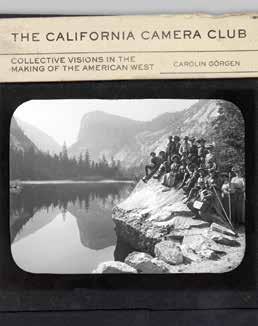
VOLUME 40 IN THE CHARLES M. RUSSELL CENTER SERIES ON ART AND PHOTOGRAPHY OF THE AMERICAN WEST
OCTOBER
$65.00x HARDCOVER 978-0-8061-9603-9
312 PAGES, 8 X 10 115 COLOR ILLUS. ART/HISTORY
Of Related Interest



TAOS SOCIETY OF ARTISTS
Edited by Peter H. Hassrick, Gerald P. Peters, and Melissa W. Speidel
$250.00 x Hardcover, Two-Volume Set 978-0-8061-9494-3
PICTURING MIGRANTS
The Grapes of Wrath and New Deal
Documentary Photography By James R. Swensen
$36.95x Paperback 978-0-8061-9155-3
FRAMING FIRST CONTACT
From Catlin to Russell By Kate Elliott
$39.95x Hardcover 978-0-8061-6711-4
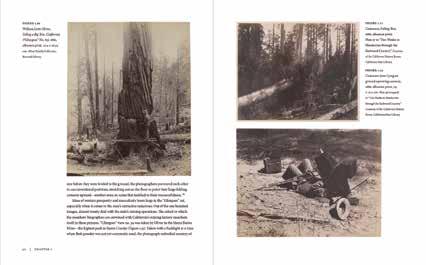
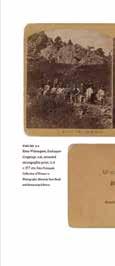
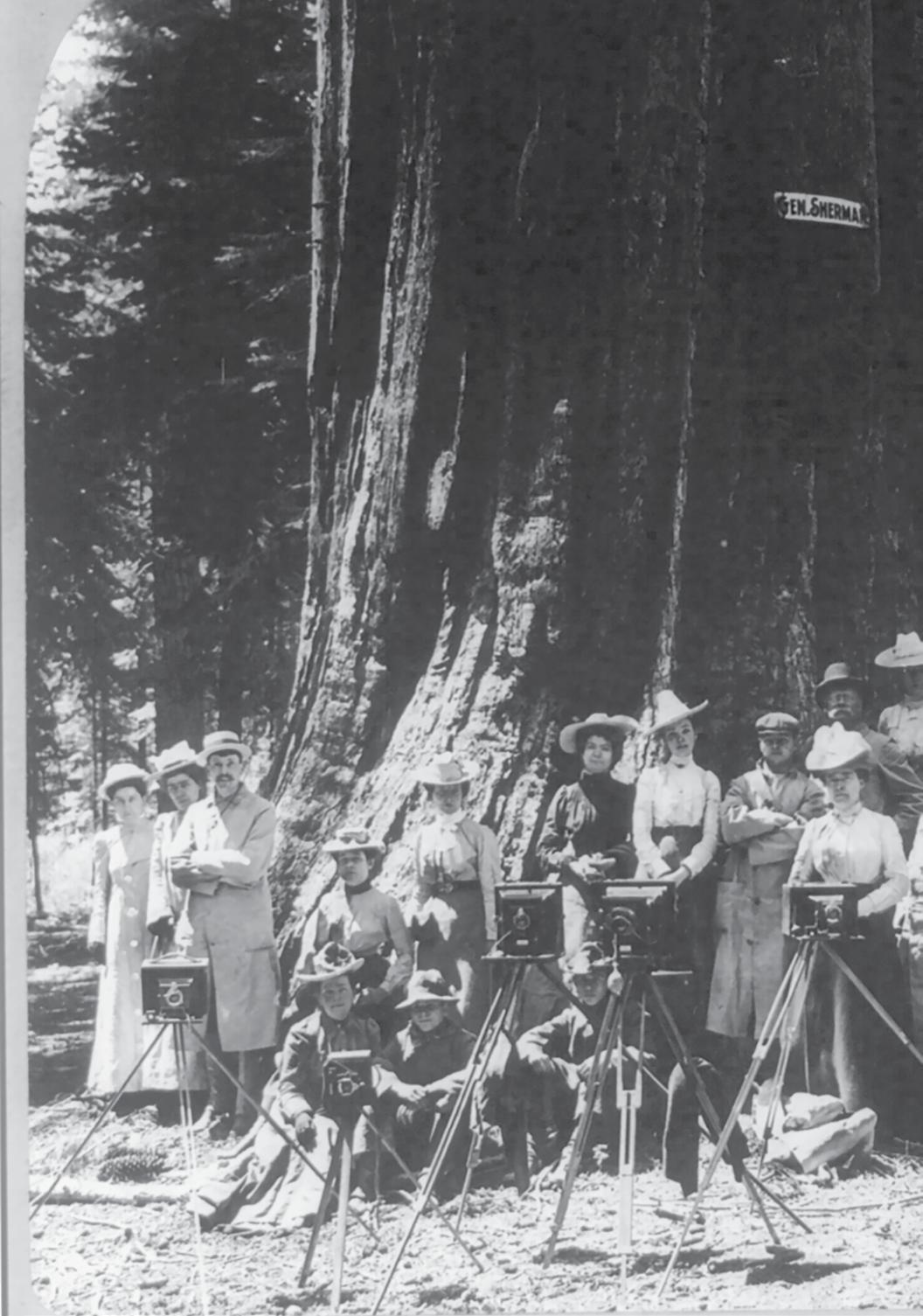
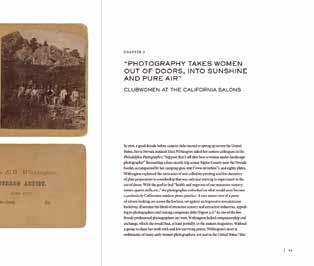
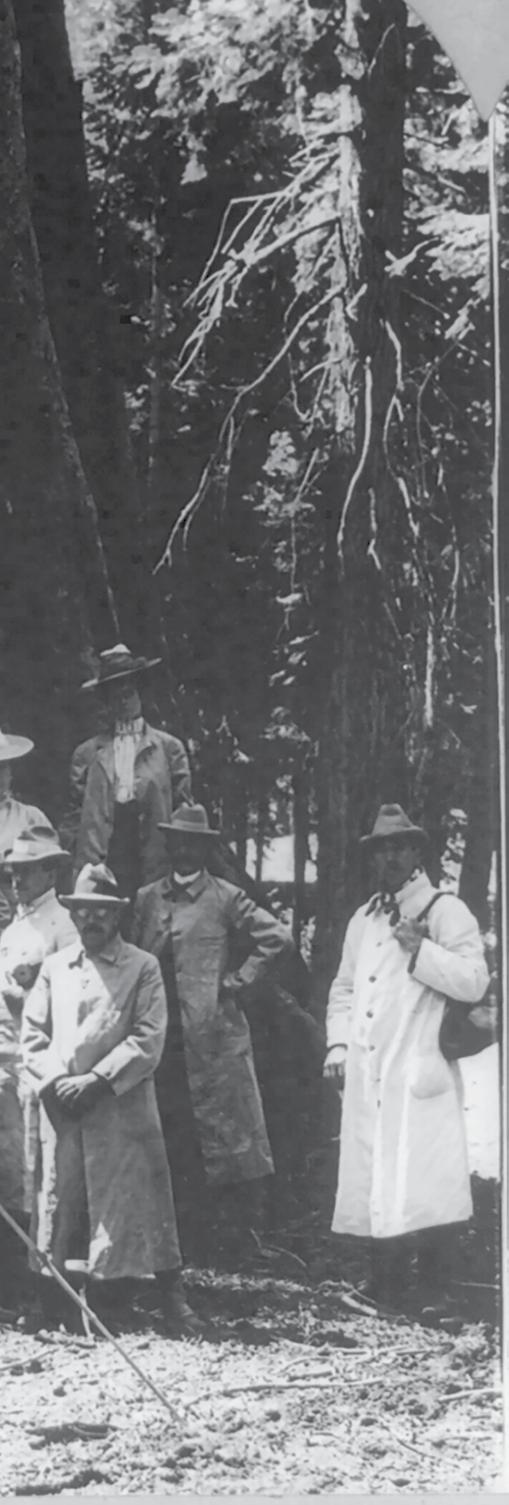
THE CALIFORNIA CAMERA CLUB
COLLECTIVE
VISIONS IN THE MAKING OF THE AMERICAN WEST
BY CAROLIN GÖRGEN
Camera club photographers who shaped popular visions of the US West
With some 400 members, the California Camera Club was the largest photography network in the United States in the early twentieth century. In The California Camera Club, Carolin Görgen recaptures the lost history of this community—and reveals its critical but little-known role in defining the popular image of California, and the American West generally, for posterity.
At a time when hand-held cameras were multiplying and San Francisco was becoming the main venue for aspiring western photographers, the unknown but committed practitioners of the California Camera Club collectively pictured California as the dominant symbol of the American West. Detached from
the cultural hubs of the East Coast, club members were instead closely tied to an influential circle of western artists, entrepreneurs, politicians, and environmentalists, all of whom were determined to promote California through the increasingly accessible medium of photography. Members deployed new technology and worked outdoors, producing an unprecedented number of images—in prints, exhibitions, magazines, and lantern slides—that would forever inform our understanding of California photography as an outdoor practice rooted in the western environment. Görgen begins her account with the first photo-exhibitions of the 1880s and the formation of a vibrant exchange network of photo excursionists. She
then explores how the club survived the 1906 San Francisco earthquake and fire to become a crucial source of support for a new, now wellknown, generation of photographers by the time of the Panama-Pacific International Exposition in 1915. Though instrumental in promoting individual photographers’ careers— as in the case of Ansel Adams—the club’s more significant contribution emerged in its collaborative nature and outdoor efforts. In telling its story, Görgen offers a new view of the history of photography and the collective composition of an enduring picture of the American West.
Carolin Görgen is Associate Professor of American Studies at Sorbonne Université in Paris, France.
Checking in on ten years— and looking to the future—of Midwestern history’s revival
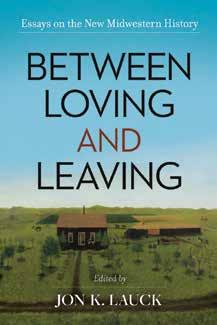
SEPTEMBER
$36.95s HARDCOVER 978-0-8061-9602-2
264 PAGES, 6 X 9
8 B&W ILLUS., 3 MAPS
HISTORY/U.S. HISTORY
Of Related Interest



THE GOOD COUNTRY
A History of the American Midwest, 1800–1900
By Jon K. Lauck
$65.00 x Hardcover 978-0-8061-9063-1
$26.95s Paperback 978-0-8061-9064-8
NORTH COUNTRY
Essays on the Upper Midwest and Regional Identity
Edited by Jon K. Lauck and Gleaves Whitney
$75.00 x Hardcover 978-0-8061-9188-1
$24.95s Paperback 978-0-8061-9189-8
PRAIRIE REPUBLIC
The Political Culture of Dakota Territory, 1879–1889
By Jon K. Lauck
$32.95x Hardcover 978-0-8061-4110-7
$24.95x Paperback 978-0-8061-6737-4
Between Loving and Leaving
Essays on the New Midwestern History
Edited by Jon K. Lauck
Long neglected by historians, the American Midwest has come to be known as the "Lost Region." But in the last decade a cadre of dedicated scholars has worked to remedy this oversight, launching new associations, conferences, and journals that have given rise to the New Midwestern History. Between Loving and Leaving reveals the depth and breadth of this revived field, showcasing its variety and reach, cultivating new approaches, and opening the way to the extraordinary range of topics embraced by a true history of the Midwest. The authors, among the most distinguished in the field, take up topics of new, renewed, and longstanding interest. They consider the Midwestern landscape, family farming, and literature and art produced by Midwesterners. Their essays explore matters of ethnicity, race, and gender, highlighting the experiences of, among others, African American Midwesterners, Latinos, Native Americans, and women. And inevitably, in a region that has produced so many activists and movements, they look at peculiarly Midwestern politics. Working the fertile territory between a deep attachment to the Midwest, with its civic and social institutions and achievements, and a flight from the familiar, the authors capture the vast and varied character of the Midwest as it is experienced, understood, and represented in art and literature—and, finally, in history.
Jon K. Lauck is the author of The Good Country: A History of the American Midwest, 1800–1900, the editor-in-chief of Middle West Review, and the President of the Society for the Study of Midwestern Literature.
How African American writers, filmmakers, and musicians saw the West
Black Wests
Reshaping Race and Place in Popular Culture
By Sara Gallagher
The story of settlers in the American West, with its tales of cowboys, prospectors, and frontiersmen, is often overwhelmingly white. Black Wests brings to light the pivotal and largely overlooked contributions of Black Americans to the western narrative. Tracing Black Western storytelling through a range of media across the nineteenth and twentieth centuries, Sara Gallagher offers a unique perspective on the Black Western—its history, its critical texts and moments in print and cinema, and the singular experiences of Black creators in the American West.
Significantly, different media presented particular opportunities, and particular limitations, for Black creators. Gallagher explores how visual mediums, especially film, played a vital role in countering negative portrayals of Black characters in popular Western cinema. In this light, she examines the likes of Oscar Micheaux, a homesteader-turned-visionary film director, and Herb Jeffries, the famed singer whose role as the Black “singing cowboy” earned him stardom in Hollywood. Her reading encompasses the well-known—like Nat Love, legendary cowboy whose life has become an enduring symbol of the Black American West; Pauline Hopkins, a journalist and novelist whose works introduced Black America to the dime Western; and the lesser-known, such as Jennie Carter, a frontierswoman who wrote about her experience in California. Concluding with a nod to modern artists like Beyoncé and Lil Nas X, Black Wests illustrates how this imaginative form continues to flourish.
An enlightening and entertaining journey through the history of the Black Western, Gallagher's work restores Black storytelling to its critical place in the making of the American West in popular culture.
Sara Gallagher is Professor in Liberal Studies at Durham College in Oshawa, Ontario.
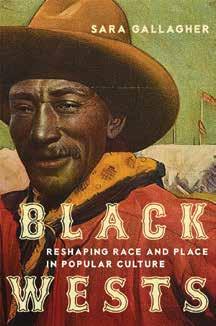
JULY
$45.00x HARDCOVER 978-0-8061-9543-8
194 PAGES, 6 X 9
20 B&W ILLUS.
U.S. HISTORY/ART HISTORY
Of Related Interest



RED DEAD REDEMPTION
History, Myth, and Violence in the Video Game West
Edited by John Wills and Esther Wright
$65.00 x Hardcover 978-0-8061-9192-8
$29.95s Paperback 978-0-8061-9185-0
RACE AND THE WILD WEST
Sarah Bickford, the Montana Vigilantes, and the Tourism of Decline, 1870–1930
By Laura J. Arata
$24.95s Paperback 978-0-8061-6497-7
FREEDOM'S RACIAL FRONTIER
African Americans in the Twentieth-Century West
Edited by Herbert G. Ruffin II and Dwayne A. Mack
$65.00 x Hardcover 978-0-8061-5977-5
$34.95x Paperback 978-0-8061-5976-8
VOLUME 2 IN THE POPULAR WEST SERIES
Silent Western films as arbiters of American identity
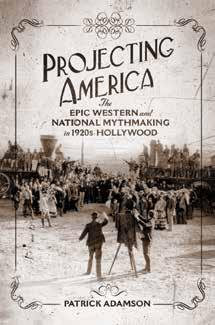
VOLUME 3 IN THE POPULAR WEST SERIES
OCTOBER
$45.00x HARDCOVER 978-0-8061-9607-7
258 PAGES, 6 X 9
30 B&W ILLUS.
HISTORY/U.S. HISTORY
Of Related Interest



The Hollywood Western, 1969–1980
By Andrew Patrick Nelson
$21.95x Paperback 978-0-8061-4821-2
HOLLYWOOD'S IMPERIAL WARS
The Vietnam Generation and the American Myth of Heroic Continuity
By Armando José Prats
$45.00 x Hardcover 978-0-8061-9375-5
ERNEST HAYCOX AND THE WESTERN
By Richard W. Etulain
$29.95x Hardcover 978-0-8061-5730-6
Projecting America
The Epic Western and National Mythmaking in 1920s Hollywood
By Patrick Adamson
In the mid-1920s, the heyday of silent film, the epic Western swept Hollywood and the nation. Movie moguls sought to add gravitas to their output with the productions—films they argued offered American audiences authentic history and lessons in citizenship at a time when Hollywood faced criticism for its movies’ morals and star scandals. Initially extremely popular, these now nearly forgotten Westerns were hailed by the movie industry’s proponents and critics alike for their “authentic” reconstruction of America’s nineteenthcentury frontier period and the social benefits in portraying historical episodes foundational to American identity to the melting pot of moviegoers. In Projecting America, the first-ever book on these silent epic Westerns, Patrick Adamson demonstrates how these films indelibly impacted the genre, historical filmmaking, and Hollywood, inviting audiences to accept uncritical visions of Manifest Destiny as accurate history. Drawing on a wealth of primary sources and punctuating his argument with film stills and intertitles, Adamson introduces readers to a variety of epic Westerns, with a particular emphasis on The Covered Wagon (1923), The Iron Horse (1924), and The Vanishing American (1925). These productions depict such key moments as pioneers on the Oregon Trail, the construction of the transcontinental railroad, and challenges faced by Indigenous peoples. Combining close analysis of these films’ historiography with exploration of their production and reception, Adamson investigates how the epic Western's emergence responded to and informed discourses far beyond those traditionally associated with the Western genre. He demonstrates that these movies not only represent an important chapter in film history but also collectively illustrate how American identity was formed and the motion picture medium was used as a vehicle for mass historical and cultural education.
In Projecting America, Adamson deftly shows how epic Westerns, at the heart of the 1920s’ pressing debates about cinema’s social influence, are integral to a broader understanding of the history of Western films and American identity.
Patrick Adamson is Associate Lecturer in Film Studies at the University of St. Andrews.
STILL IN THE SADDLE
Making Each Other Laugh Contemporary Arapaho
Storytelling
By Andrew Cowell
Native American oral storytelling traditions have been widely documented and appreciated, but they are often associated with the past, pre-contact times, and ancient legends. Less attention has been given to the way this tradition continues to exist in the present, with new stories being created to respond to the modern world. Making Each Other Laugh provides unique insight into contemporary Northern Arapaho stories, told in the Arapaho language, and into the social and cultural milieu of the stories. It also provides invaluable insight into the rich humor of modern Arapaho stories and life.
These stories—from roughly the 1990s through the 2010s—are a rich source of Arapaho wisdom and values, often imparted in a singularly comical fashion. Appearing here in both Arapaho and English, they are also a virtual dictionary of the Arapaho language, featuring many rare and complex words that can only be understood in the storytelling context. This volume presents these stories in sequences, as they were actually told in social interactions among Native speakers. Structured this way, the anthology maintains the true nature of the Arapaho story sequence as a single, collaborative artistic and social performance. In critical chapters, Andrew Cowell focuses on how the stories emerge, how narrators negotiate what comes next and who will tell it, and how the genres and themes of the stories relate to each other. He also explores the ways such modern stories employ genres that have evolved from traditional models while adapting new content and styles over the course of the twentieth and early twenty-first centuries.
Largely humorous, sometimes hilarious, often centered on encounters with Euro-American society and technology, the stories in Making Each Other Laugh bear witness to the continuing vitality of Native American oral traditions.
Andrew Cowell is Professor of Linguistics and Faculty Director of the Center for Native American and Indigenous Studies at the University of Colorado Boulder. He has written numerous books, including The Arapaho Language and Arapaho Stories, Songs, and Prayers: A Bilingual Anthology.
A unique collection of humorous Indigenous stories about the modern world
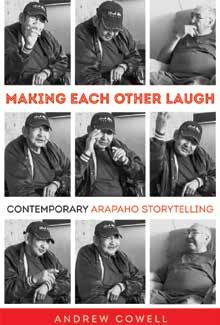
OCTOBER
$45.00x HARDCOVER 978-0-8061-9600-8
298 PAGES, 6.14 X 9.21
8 B&W ILLUS.
NATIVE AMERICAN/LANGUAGE
Of Related Interest



ARAPAHO STORIES, SONGS, AND PRAYERS
A Bilingual Anthology
By Andrew Cowell, Alonzo Moss
Sr., and William J. C’Hair
$55.00 x Hardcover 978-0-8061-4486-3
$29.95x Paperback 978-0-8061-5966-9
THE ARAPAHO WAY
Continuity and Change on the Wind River Reservation
By Sara Wiles
$39.95s Hardcover 978-0-8061-6290-4
ARAPAHO WOMEN’S QUILLWORK
Motion, Life, and Creativity
By Jeffrey D. Anderson
$21.95x Paperback 978-0-8061-5583-8
Eaton’s magnum opus on Cherokee history published for the first time

VOLUME 26 IN THE NEW DIRECTIONS IN NATIVE AMERICAN STUDIES SERIES
DECEMBER
$45.00x HARDCOVER 978-0-8061-9606-0
368 PAGES, 6 X 9
15 B&W ILLUS.
NATIVE AMERICAN/U.S. HISTORY
Of Related Interest



STOKING THE FIRE Nationhood in Cherokee Writing, 1907–1970
By Kirby Brown
$39.95x Hardcover 978-0-8061-6015-3
$24.95x Paperback 978-0-8061-6016-0
A FIELD OF THEIR OWN
Women and American Indian History, 1830–1941
By John M. Rhea
$34.95x Hardcover 978-0-8061-5227-1
$26.95x Paperback 978-0-8061-6898-2
SERVING THE NATION
Cherokee Sovereignty and Social Welfare, 1800–1907
By Julie L. Reed
$34.95x Hardcover 978-0-8061-5224-0
$26.95x Paperback 978-0-8061-6919-4
A History of the Cherokee Nation
By Rachel Caroline Eaton
Edited by David Berry, Martha Berry, and Patricia Dawson
Written shortly before her death in 1938, Rachel Caroline Eaton’s A History of the Cherokee Nation is the celebrated Cherokee historian’s magnum opus—and a work whose grounding in Cherokee tradition and perspective makes it unique in the annals of American history. The book spans the years from pre-contact to what Eaton feared would be the Cherokee Nation’s demise after allotment and Oklahoma statehood in 1907. Its later chapters chronicle post–Civil War events that Eaton herself witnessed, from the repeated incursions into Cherokee sovereignty by railroad and timber barons, white interlopers, land speculators, and federal policymakers to the attempted dissolution of Cherokee nationhood and self-governance.
Published here for the first time, A History of the Cherokee Nation is at once rigorously researched and documented and deeply indebted to Cherokee methods of storytelling and transmitting knowledge. Eaton’s incorporation of local histories, oral accounts, family archives, and the contributions of non-academic storytellers and knowledge keepers gives this work a sense of intimacy and immediacy rare among conventional histories of the time. Her History is also attentive to the importance of Cherokee family and kinship, a cultural tradition carried forward by editors Martha Berry and Patricia Dawson, both Eaton family descendants, and Dave Berry. Eaton’s history of her people is accompanied by an introduction and copious notes by the editors to provide guidance and context for today’s readers.
Once deemed “too pro-Cherokee” for publication, the book now stands as a powerful testament to the tenacity of the Cherokee spirit, the endurance of the Cherokee Nation’s history, culture, and tradition, and the significance of the Native voice in the American story.
Rachel Caroline Eaton (Cherokee Nation; 1869–1938) was a historian, educator, and Cherokee intellectual. She graduated from the Cherokee Female Seminary and earned a PhD from the University of Chicago in 1919. She is the author of John Ross and the Cherokee Indians. Dave Berry worked as a newspaper editor and managing editor for 44 years. Martha Berry (Cherokee Nation) is Eaton’s grandniece. She is a beadwork artist and was named a “Cherokee National Treasure.” She can be found at www.berrybeadwork.com. Patricia Dawson (Cherokee Nation) is Eaton’s great-great-great niece. She is Assistant Professor of History at Mount Holyoke College.
How Cherokees remade Christianity in the nineteenth century
The New Voice of God
Language, Worldview, and the Cherokee Bible
By Margaret Bender and Thomas N. Belt
For Christian European missionaries among the Cherokees at the turn of the eighteenth century, translating the Bible meant wrestling with the extreme structural differences between Cherokee and English. The New Voice of God reveals how these linguistic differences encoded basic predispositions and orientations toward the physical, spiritual, and social worlds—and how their translation in turn encodes the profound linguistic and cultural exchange manifested in the making of the Cherokee Bible. While the introduction of Christianity shaped Cherokee communicative practices and culture, the Cherokee language also reshaped the Bible to reflect a definitive Native worldview.
Focusing on three books of the Cherokee Bible—Genesis, John, and Matthew— Margaret Bender and Thomas N. Belt demonstrate how Christianity, written in and on Cherokee terms, can be uniquely and distinctly Cherokee, while remaining undeniably Christian. For example, Cherokee’s rich and complex grammar work against English’s noun-centeredness, yielding creative approximations of European objects as conditions and essences as events. Cherokee’s radically different pronoun structure includes the reader in Biblical conversation in surprising ways. The authors also explain the relevance of the Cherokee Indigenous writing system—invented by Sequoyah, a non-Christian native speaker—to the complex spiritual landscape of the nineteenth century. Their analysis suggests that the Cherokee Bible records this cross-cultural encounter at a deep philosophical level, providing evidence that microlinguistic detail powerfully and intricately reflects macrosociological phenomena.
In showing how Cherokee Christians ingeniously adapted Christian practices to create unique social and spiritual identities, The New Voice of God documents how this adaptation—manifest in the translation of Christian texts into Cherokee—not only bridged two vastly different languages but also exposed deep philosophical differences, challenging Western cultural norms and reshaping spiritual discourse.
Margaret Bender is Professor of Anthropology at Wake Forest University. She is the author of Signs of Cherokee Culture: Sequoyah’s Syllabary in Eastern Cherokee Life and editor of Linguistic Diversity in the South: Changing Codes, Practices, and Ideology. Thomas N. Belt (Cherokee Nation) is a retired Cherokee language instructor at Western Carolina University, where he received an honorary doctorate. He is a fluent Cherokee speaker and the author of articles on Cherokee language and worldview.
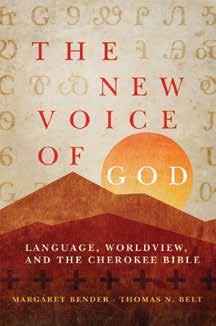
JULY
$45.00x HARDCOVER 978-0-8061-9542-1
190 PAGES, 6 X 9
58 TABLES
NATIVE AMERICAN/ANTHROPOLOGY/ LANGUAGE
Of Related Interest



CHEROKEE NARRATIVES
A Linguistic Study
Durbin Feeling, William Pulte, and Gregory Pulte
$32.95x Hardcover 978-0-8061-5986-7
$24.95x Paperback 978-0-8061-5987-4
CHEROKEE REFERENCE GRAMMAR
By Brad Montgomery-Anderson
$39.95x Paperback 978-0-8061-4667-6
THE CHEROKEE SYLLABARY
Writing the People’s Perseverance
By Ellen Cushman
$34.95x Hardcover 978-0-8061-4220-3
$24.95x Paperback 978-0-8061-4373-6
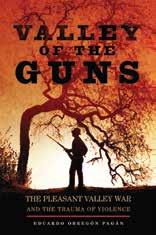
NEW IN PAPERBACK
Valley
of the Guns
The Pleasant Valley War and the Trauma of Violence
By Eduardo Obregón Pagán
An early explorer's recently discovered account of his journey across the American West
★ Winner New Mexico/Arizona Book Awards, Best Arizona Book, New Mexico Book Co-op
★ Winner New Mexico/Arizona Book Award, Arizona Book History, New Mexico-Co-op
In the late 1880s, Pleasant Valley, Arizona, descended into a nightmare of violence, murder, and mayhem. By the time the Pleasant Valley War was over, eighteen men were dead, four were wounded, and one was missing, never to be found. Valley of the Guns explores the reasons for the violence that engulfed the settlement, turning neighbors, families, and friends against one another. Drawing from history, geography, cultural studies, and trauma studies, Pagán uses the story of Pleasant Valley to demonstrate a new way of looking at the settlement of the West. Writing in a vivid narrative style and employing rigorous scholarship, he creatively explores the role of trauma in shaping the lives and decisions of the settlers in Pleasant Valley and offers new insight into the difficulties of survival in an isolated frontier community.
Eduardo Obregón Pagán is the Bob Stump Endowed Professor of History at Arizona State University, Tempe, and author of Murder at the Sleepy Lagoon: Zoot Suits, Race, and Riot in Wartime L.A. He has published in such journals as Pacific Historical Review and Journal of Social Science History.
SEPTEMBER
$29.95 HARDCOVER 978-0-8061-6154-9
$24.95 PAPERBACK 978-0-8061-9635-0
312 PAGES, 6 X 9
10 B&W ILLUS., 3 MAPS, 2 TABLES, 2 CHARTS
U.S. HISTORY
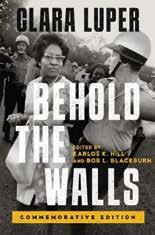
NEW IN PAPERBACK Behold the Walls Commemorative Edition
By Clara Luper
Edited by Karlos K. Hill and Bob L. Blackburn
The definitive account of the early Oklahoma civil rights movement by the leader who inspired the student protesters
On August 19, 1958, Clara Luper and thirteen Black youth walked into Katz Drug Store in Oklahoma City and sat down at the lunch counter. When they tried to order, they were denied service. As they sat in silence, refusing to leave, the surrounding white customers unleashed a torrent of threats and racial slurs. This first organized sit-in in Oklahoma— almost two years before the more famous sit-ins in Greensboro, North Carolina—sparked other demonstrations in Oklahoma and other states. Behold the Walls is Luper’s engrossing firsthand account of how the movement she helped launch ended legal racial segregation. First published in 1979, Behold the Walls now features a new introduction and 33 newly selected historical photos.
Clara Luper (1923–2011) was an Oklahoma schoolteacher, civic leader, and nationally prominent civil rights activist. Karlos K. Hill is Regents’ Associate Professor in the Clara Luper Department of African and African American Studies at the University of Oklahoma. Bob L. Blackburn is the former executive director of the Oklahoma Historical Society.
AUGUST
$26.95 HARDCOVER 978-0-8061-9279-6
$24.95 PAPERBACK 978-0-8061-9644-2
312 PAGES, 6 X 9
33 B&W ILLUS.
BIOGRAPHY/U.S. HISTORY
VOLUME 3 IN THE GREENWOOD CULTURAL CENTER SERIES IN AFRICAN DIASPORA HISTORY AND CULTURE
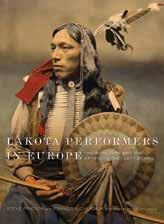
NEW IN
PAPERBACK
Lakota Performers in Europe
Their Culture and the Artifacts They Left Behind
By Steve Friesen
With François Chladiuk
Foreword by Walter Littlemoon
The stories and legacies of Lakota Sioux performers abroad
★ Winner Western Heritage Awards Literary Nonfiction, National Cowboy & Western Heritage Museum
★ Winner SPUR Award, Best Western Contemporary Nonfiction, Western Writers of America
★ Winner Joan Paterson Kerr Award, Best Illustrated Book on the American West, Western History Association
From April to November 1935 in Belgium, fifteen Lakotas enacted their culture on a world stage. Wearing beaded moccasins and eagle-feather headdresses, they set up tepees, danced, and demonstrated marksmanship and horse taming for the twenty million visitors to the Brussels International Exposition, a grand event similar to a world’s fair. The performers then turned homeward, leaving behind 157 pieces of Lakota culture that they had used in the exposition, ranging from costumery to weaponry. In Lakota Performers in Europe, author Steve Friesen tells the story of these artifacts, forgotten until recently, and of the Lakota performers who used them.
Steve Friesen is retired Director of the Buffalo Bill Museum and Grave near Denver, Colorado, and author of Galloping Gourmet: Eating and Drinking with Buffalo Bill. François Chladiuk is a collector of artifacts of the American West and owner of the Western Shop in Brussels, Belgium. Walter Littlemoon (Lakota) is a son of Lakota participants in the 1935 Brussels International Exposition; his family's artifacts are featured in this volume.
JULY
$32.95s PAPERBACK 978-0-8061-9608-4
276 PAGES, 8.5 X 11
316 COLOR AND B&W ILLUS.
NATIVE AMERICAN/WORLD HISTORY
VOLUME 3 IN THE WILLIAM F. CODY SERIES ON THE HISTORY AND CULTURE OF THE AMERICAN WEST
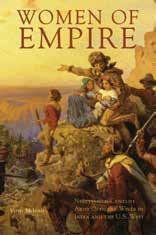
NEW IN PAPERBACK
Women of Empire Nineteenth-Century Army Officers' Wives in India and the U.S. West
By Verity McInnis
Offers a nuanced perspective on the colonial experience
In his Rules for Wife Behavior, Colonel Joseph Whistler summed up his expectations for his new bride: “You will remember you are not in command of anything except the cook.” Although their roles were circumscribed, the wives of army officers stationed in British India and the U.S. West commanded considerable influence, as Verity McInnis reveals in this comparative study of two female populations in two global locations. Women of Empire adds a previously unexplored dimension to our understanding of the connections between gender and imperialism in the nineteenth century. McInnis examines the intersections of class, race, and gender to reveal social spaces where female identity and power were both contested and constructed. Redefining the officer’s wife as a power holder and an active contributor to national prestige, Women of Empire opens a new, nuanced perspective on the colonial experience—and on the complex nexus of gender, race, and imperial practice.
Verity McInnis is a Lecturer in History at Texas A&M University in College Station. Her articles have appeared in Military History of the West and Pacific Historical Review.
SEPTEMBER
$34.95x HARDCOVER 978-0-8061-5774-0
$24.95x PAPERBACK 978-0-8061-9388-5
300 PAGES, 6 X 9
11 B&W ILLUS., 1 TABLE
WOMEN'S STUDIES/MILITARY HISTORY
A new player at the center of the landmark environmental conflict
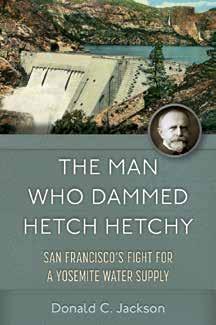
VOLUME 8 IN THE PUBLIC LANDS HISTORY SERIES
AUGUST
$45.00x HARDCOVER 978-0-8061-9557-5
372 PAGES, 6.14 X 9.21
60 B&W ILLUS., 1 MAP HISTORY/BIOGRAPHY
Of Related Interest



BIG DAMS OF THE NEW DEAL ERA
A Confluence of Engineering and Politics
By David P. Billington and Donald C. Jackson
$26.95x Paperback 978-0-8061-5762-7
BUILDING THE ULTIMATE DAM
John S. Eastwood and the Control of Water in the West
By Donald C. Jackson
$24.95x Paperback 978-0-8061-3733-9
DAMMING THE RESERVATION
Tribal Sovereignty and Activism at Fort Berthold
By Angela K. Parker
$45.00 x Hardcover 978-0-8061-9461-5
The Man Who Dammed Hetch Hetchy
San Francisco’s Fight for a Yosemite Water Supply
By Donald C. Jackson
The damming of Hetch Hetchy Valley in Yosemite National Park is widely seen as a watershed event in American environmental history. Passionately opposed by naturalist John Muir and his ardent supporters, the massive undertaking succeeded largely through the efforts of John R. Freeman, one of the most important, influential, and politically adroit engineers of the Progressive Era.
In The Man Who Dammed Hetch Hetchy, Donald C. Jackson focuses on Freeman to offer a nuanced account of how the City of San Francisco won the right to transform the bucolic valley into a municipal water supply reservoir that, a century later, continues to serve millions of Bay Area residents.
Central to Freeman's work for San Francisco from 1910 to 1913 was his design of a high-pressure aqueduct projected to deliver 400 million gallons of water per day to the Bay Area and generate more than 150,000 horsepower of electricity. Beyond crafting an extensively illustrated 421-page report detailing his design, he also worked—and succeeded—as a political advocate lobbying for congressional approval of the project. Jackson draws on a wealth of correspondence, reports, and other documents, including congressional records, to highlight Freeman's contention that the Hetch Hetchy project would not just provide copious quantities of water and power, but would also enhance the Sierra Nevada environment and increase tourist access to the northern reaches of the national park. His self-avowed goal was not to tear down or destroy Hetch Hetchy but to utilize the valley for the greater public good and to create a system that would serve the city for decades if not centuries to come.
Portraying Freeman for the first time in all his provocative complexity, The Man Who Dammed Hetch Hetchy is at once a deeply researched, richly detailed biography and social history and a compelling reinterpretation of a pivotal moment in US environmental culture.
Donald C. Jackson, Cornelia F. Hugel Professor of History at Lafayette College, Easton, Pennsylvania, is the author of Building the Ultimate Dam.
Ethanol
A
Hemispheric History for the Future of Biofuels
By Jeffrey T. Manuel and Thomas D. Rogers
Though ethanol, a liquid fuel made from agricultural byproducts, has generated controversy in recent years—good or bad for the environment? a big-ag boon or boondoggle?—its use goes back more than a century. Tracing the little-known history of this promising and contentious fuel, Ethanol: A Hemispheric History for the Future of Biofuels reveals the transnational nature of ethanol's development by its two biggest producers, the U.S. and Brazil. By drawing the connections between the shifting fortunes of ethanol in these two countries, the book presents the first full picture of the long history of this renewable fuel that from the beginning offered an imperfect alternative to oil. Though generally presented as parallel stories, the histories of ethanol in the U.S. and Brazil are inextricably linked. Authors Jeffrey T. Manuel and Thomas D. Rogers show how policies in one country shaped those in the other. Brazil patterned its mid-century development on the U.S. model, adopting an automobile- and highway-focused transportation system and a fossil fuel-intensive agricultural sector. U.S. policymakers in turn took note when Brazil responded to the 1970s oil shocks by distributing ethanol nationwide, replacing half of its gasoline consumption. In the 2000s, the nations' leaders worked together to dramatically expand ethanol production. Today, as a new generation of biofuels meant to power aviation and fight climate change again connects Brazilian and U.S. ethanol, Manuel and Rogers explain how the fuel's future, like its history, is complicated by technical, scientific, economic, and social questions—about how to calculate carbon emissions, agricultural land use, national security and sovereignty, and the balance between government regulation and market forces. Understanding the future of biofuels demands a reckoning with this extensive, shared history—a reckoning that Manuel and Rogers's far-reaching, deeply researched book brings into view.
Jeffrey T. Manuel is Professor of History at Southern Illinois University Edwardsville and the author of Taconite Dreams: The Struggle to Sustain Mining on Minnesota’s Iron Range, 1915–2000. Thomas D. Rogers is Professor of History at Emory University and the author of Agriculture’s Energy: The Trouble with Ethanol in Brazil’s Green Revolution.
The story of oil’s imperfect perennial alternative

OCTOBER
$34.95s HARDCOVER 978-0-8061-9601-5
300 PAGES, 6 X 9
10 B&W ILLUS., 2 MAPS HISTORY
Of Related Interest



SILICON VALLEY AND THE ENVIRONMENTAL INEQUALITIES OF HIGH-TECH URBANISM
By Jason A. Heppler
$90.00 x Hardcover 978-0-8061-9373-1
$29.95x Paperback 978-0-8061-9374-8
ENERGY CRISES
Nixon, Ford, Carter, and Hard Choices in the 1970s
By Jay Hakes
$36.95s Hardcover 978-0-8061-6852-4
$26.95s Paperback 978-0-8061-9098-3
AMERICAN ENERGY POLICY IN THE 1970S
Edited by Robert Lifset
$24.95x Paperback 978-0-8061-4450-4
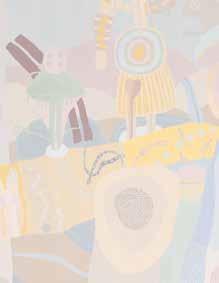
DISTRIBUTED FOR TIA COLLECTION
JULY
$65.00 HARDCOVER 978-0-9914792-7-6
172 PAGES, 11 X 14
53 COLOR ILLUS., 1 B&W ILLUS.
ART/ARCHITECTURE
Of Related Interest


NEW BEGINNINGS
An American Story of Romantics and Modernists in the West
By MaLin Wilson-Powell
$65.00 x Hardcover 978-0-9914792-3-8
$40.00 x Paperback 978-0-9914792-4-5
LEON GASPARD
The Call of Distant Places
By Forrest Fenn
$85.00 x Hardcover 978-0-9914792-1-4
Chaco Series
Art, Poetry, and Texts by Judy Tuwaletstiwa
By Diana Gaston and Philip Tuwaletstiwa
Dozens of books have been written on Chaco Canyon, a 34,000-acre National Historical Park and UNESCO World Heritage Site located in northwestern New Mexico. Scholars continue to debate the nature of the various Ancestral Puebloans that inhabited the area c. 850–1250 CE, what it was used for, and what caused it to be abandoned. Renowned visual artist Judy Tuwaletstiwa visited Chaco in 1984 while on a trip through the desert canyons of the Southwest. Over the next several years, she created artworks based on her deeply personal, experiential reactions to this ancient and mysterious archaeological site that remains sacred to contemporary Pueblo people. Throughout the book are Tuwaletstiwa’s own words—lyrical, deeply philosophical, and poetic—that unify the material into a uniquely provocative and beautiful work of art. Diana Gaston’s essay provides context on Tuwaletstiwa’s process and inspiration while Philip Tuwaletstiwa provides the archaeological and anthropological background of the place and what is known about its original inhabitants. Of special interest are the astronomical alignments of the built environment and roadways that were designed with religious, mystical, and divine significance to his ancestors from the area.
Diana Gaston is the Director of Tamarind Institute at the University of New Mexico. She has served as curator of public and private collections, including the University of New Mexico Art Museum, Albuquerque; the Museum of Photographic Arts, San Diego; and Fidelity Investments Corporate Art Collection, based in Boston. She has contributed essays and critical reviews to numerous publications and monographs. Philip Tuwaletstiwa is a member of the Hopi Tribe. He holds degrees in Geodetic Science from Ohio State and Cornell Universities. For 22 years, he was an Officer in the National Oceanographic and Atmospheric Administration’s Commissioned Corps. As Deputy Director of NOAA’s National Geodetic Survey, he initiated, for the Solstice Project, precise orientation surveys of the major Chaco buildings. He also created a Land Information System for the Hopi Tribe to assist in managing cultural and natural resources. Phillip and Judy are collaborating on a novel about the origins of Chaco Canyon. Titled “The Laughing Spiders,” it combines mythology, dreaming, history, archaeology, and archeoastronomy.
Collecting the “Other Americas”
Ancient Americas Collections in Art Museums
Edited by Victoria I. Lyall and Ellen Hoobler
The term “Pre-Columbian art” once described the material culture produced in the Americas, mostly south of the US–Mexico border, prior to the arrival of Europeans. Museums across the United States now refer to these departments as “the Americas” or “the ancient Americas.” A few individuals and museums began collecting in this area already in the late nineteenth century, but many others did not embark on it until well into the twentieth. A range of figures brought these collections into being: a handful of dedicated curators, pioneering directors, and passionate collectors and patrons engaged dealers, archaeologists, scholars, and governments to amass artworks and present them to students and the public alike. During this time, many art museums insisted on displaying these materials not as ethnographic or anthropological objects but as finely crafted works of aesthetic value—as art. During the latter half of the twentieth century, more concern arose over acquisition methods and standards as well as the ethics of collecting objects of cultural heritage and import.
Stewards of these collections in American art museums have begun to confront the changing meanings and import of what Nelson Rockefeller once described as the “Other Americas.” This This Mayer Center Symposium volume captures the history of collecting and display of ancient American works in art museums, a history surprisingly poorly documented until now, and their significance for communities today.
Victoria I. Lyall is Frederick and Jan Mayer Curator of Art of the Ancient Americas at Denver Art Museum. Ellen Hoobler is a curator at the Walters Art Museum in Baltimore, MD, and an expert in pre-Columbian art of Mexico.
◆ WITH ADDITIONAL CONTRIBUTIONS BY
Susan E. Bergh, former Curator of Pre-Columbian and Native North American Art, Cleveland Museum of Art
Kristopher Driggers, Associate Curator of Latin American Art, San Antonio Museum of Art
Rex Koontz, Moores Professor of Art History, University of Houston, and Consulting Curator of the Art of the Indigenous Americas, Museum of Fine Arts, Houston
Mary E. Miller, Director of the Getty Research Institute
Joanne Pillsbury, Andrall E. Pearson Curator of Ancient American Art, Metropolitan Museum of Art
Elizabeth Irene Pope, Senior Research Associate with the Arts of the Americas and Textiles departments at the Art Institute of Chicago
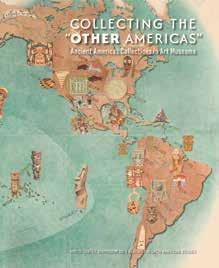
DISTRIBUTED FOR DENVER ART MUSEUM
AUGUST
$29.95x PAPERBACK 978-1-945483-17-2
194 PAGES, 9 X 11
145 COLOR AND B&W ILLUS.
ART/LATIN AMERICA
Of Related Interest


NEOCOLONIAL
Matthew H. Robb, Mesoamerican specialist, Library of Congress, Washington, DC
Nancy B. Rosoff, Andrew W. Mellon Curator and Chair of the Arts of the Americas, Brooklyn Museum

Inventing Modern Latin American Nations
Mayer Center Symposium XX
Edited by Jorge F. Rivas Pérez
$29.95x Paperback 978-1-945483-15-8
EL MAR CARIBE
The American Mediterranean
Edited by Victoria I. Lyall
$29.95x Paperback 978-1-945483-14-1
COMPANION TO SPANISH COLONIAL ART AT THE DENVER ART MUSEUM
By Donna Pierce
$10.95x Paperback 978-0-914738-78-7
Practical wisdom for any higher ed instructor

VOLUME 6 IN THE TEACHING, ENGAGING, AND THRIVING IN HIGHER ED SERIES
JULY
$95.00x HARDCOVER 978-0-8061-9545-2
$26.95s PAPERBACK 978-0-8061-9546-9
360 PAGES, 6 X 9
3 B&W ILLUS.
EDUCATION/SOCIOLOGY
Of Related Interest



A PEDAGOGY OF KINDNESS
By Catherine J. Denial
$95.00 x Hardcover 978-0-8061-9384-7
$24.95s Paperback 978-0-8061-9385-4
THE PRESENT PROFESSOR
Authenticity and Transformational Teaching
By Elizabeth A. Norell
$95.00 x Hardcover 978-0-8061-9468-4
$24.95s Paperback 978-0-8061-9469-1
A TEACHER’S GUIDE TO LEARNING
STUDENT NAMES
Why You Should, Why It’s Hard, How You Can
By Michelle D. Miller
$14.95s Paperback 978-0-8061-9466-0
Snafu EDU
Teaching and Learning When Things Go Wrong in the College Classroom
By Jessamyn Neuhaus
No matter how skilled, thoughtful, and well prepared professors are—or how motivated and engaged their students might be—things sometimes go wrong. In this empowering, smart, and refreshingly frank book, Jessamyn Neuhaus offers college educators a roadmap for anticipating and navigating these inevitable snafus—and keeping the course of teaching and learning on track. Clear-eyed about the rarely acknowledged foul-ups that teachers invariably confront, Snafu Edu provides evidence-based insights into why these things happen and practical, workable strategies for recognizing, responding to, repairing, and reducing them.
Snafu Edu identifies five major reasons for systemic and individual snafus in the field—inequity, disconnection, distrust, failure, and fear—and shows how understanding underlying causes can help educators perceive the problem and take appropriate measures. These measures are part of a problem-solving approach that Neuhaus calls STIR: stop, think, identify, and repair. She details course design principles and pedagogical practices to reduce major teaching and learning snafus by increasing equity, building connections, fostering trust, enabling success, and increasing agency for both educators and students.
Looking beyond “classroom management” and “conflict resolution,” Snafu Edu carefully and clearly grounds its lessons in the real context of education, where institutional structures, systemic injustices, individual and collective history, and the complexity of human interactions mean there will always be snafus. Like a preparedness kit for natural disasters, the book gives teachers an educational “go-bag” of insights, strategies, and practices to have at the ready when things go sideways.
Jessamyn Neuhaus is the Director of the Center for Teaching and Learning Excellence and Professor in the School of Education at Syracuse University. She is author of Geeky Pedagogy: A Guide for Intellectuals, Introverts, and Nerds Who Want to Be Effective Teachers and editor of Picture a Professor: Interrupting Biases about Faculty and Increasing Student Learning. Her website is https://jessamynneuhaus. com/.
Finding authenticity, power, and joy in academia
Empowered A Woman Faculty of Color's Guide to Teaching and Thriving
By Chavella T. Pittman
Experience tells us, and studies confirm, that women faculty of color are among the most overworked, unfairly criticized, and least rewarded individuals serving higher education today. They are also the most thwarted when it comes to the basic goals of an academic career: tenure, security, and personal satisfaction. This, despite ranking as some of the most talented teachers we have: Women faculty of color disproportionately overdeliver on higher education's loftiest promise—preparing students to contribute to the world. In this book, these highly effective, overworked, underappreciated women will find expert guidance, encouragement, and practical steps to meet the outsized challenges women of color face in academia, and finally get what they've long since earned.
In Empowered, Chavella T. Pittman distills decades of practice to show women faculty of color how to be unapologetically authentic in their teaching, speak up in reviews about their classroom excellence, and offer themselves compassion. And, how to recover a sense of joy in what they do. Drawing on extensive research, Pittman provides active measures for withstanding intersectional race and gender tensions, exercises to inoculate against toxic dynamics, and tools to resist being silenced and support being heard. Through these empowering strategies and exercises, women faculty of color can become the most powerful versions of themselves in their classrooms, and go on to make the most of their careers, contributions, and lives.
Chavella T. Pittman is a Professor of Sociology at Dominican University in River Forest, Illinois. Her website is www.effectivefaculty.org.
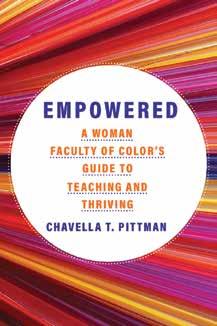
VOLUME 7 IN THE TEACHING, ENGAGING, AND THRIVING IN HIGHER ED SERIES
SEPTEMBER
$95.00x HARDCOVER 978-0-8061-9564-3
$24.95s PAPERBACK 978-0-8061-9565-0
220 PAGES, 6 X 9 EDUCATION
Of Related Interest



THE OPPOSITE OF CHEATING
Teaching for Integrity in the Age of AI
By Tricia Bertram Gallant, and David A. Rettinger
$95.00 x Hardcover 978-0-8061-9495-0
$24.95s Paperback 978-0-8061-9496-7
MAKING WRITING MEANINGFUL
A Guide for Higher Education
By Michele Eodice, Anne Ellen Geller, and Neal Lerner
$95.00 x Hardcover 978-0-8061-9533-9
$19.95s Paperback 978-0-8061-9534-6
A TEACHER’S GUIDE TO LEARNING STUDENT NAMES
Why You Should, Why It’s Hard, How You Can
By Michelle D. Miller
$14.95s Paperback 978-0-8061-9466-0
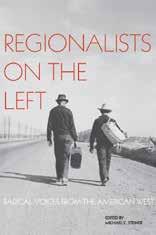
NEW IN PAPERBACK
Regionalists on the Left
Radical Voices from the American West
Edited by Michael C. Steiner
Sixteen writers and artists who fought injustice while remaining attached to the West
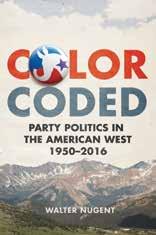
“Nothing is more anathema to a serious radical than regionalism,” Berkeley English professor Henry Nash Smith asserted in 1980. Although regionalism in the American West has often been characterized as an inherently conservative, backward-looking force, regionalist impulses have in fact taken various forms throughout U.S. history. The essays collected in Regionalists on the Left uncover the tradition of left-leaning western regionalism during the 1930s and 1940s. Editor Michael C. Steiner has assembled a group of distinguished scholars who explore the lives and works of sixteen progressive western intellectuals, authors, and artists, ranging from nationally prominent figures such as John Steinbeck and Carey McWilliams to equally influential, though less well known, figures such as Angie Debo and Américo Paredes. Although they never constituted a unified movement complete with manifestos or specific goals, the thinkers and leaders examined in this volume raised voices of protest against racial, environmental, and working-class injustices during the Depression era that reverberate in the twenty-first century.
Michael C. Steiner is Professor Emeritus of American Studies at California State University, Fullerton. He has authored award-winning articles and co-authored or co-edited several books, including Region and Regionalism in the United States; Mapping American Culture; and Many Wests: Place, Culture, and Regional Identity.
JULY
$29.95x HARDCOVER 978-0-8061-4340-8
$24.95s PAPERBACK 978-0-8061-9462-2
416 PAGES, 6.14 X 9.21
16 B&W ILLUS.
NEW IN PAPERBACK Color Coded Party Politics in the American West, 1950–2016
By Walter Nugent
The first comprehensive history of political change and stability in the modern American West
The now staunchly red state of Texas was deep blue in 1950 and had virtually no functioning Republican Party. California, on the other hand, was reliably red. Today, both states have jumped to the opposite end of the political spectrum. Texas is one of the most conservative states, while California has become one of today’s most liberal bastions. These are the most dramatic cases, but notable shifts in voting patterns have occurred throughout the western states in recent decades— shifts so varied and complex that they have, until now, eluded the attention focused on the drastic examples of the South and Northeast. Bringing clarity to the remarkably mixed yet poorly understood map of America’s red, blue, and purple western half, Color Coded presents the first comprehensive history of political change and stability in the region between 1950 and 2016. A powerful, exhaustively researched study of modern political organization, party development, and shifting voter blocs in the West, Color Coded deftly charts, as well, the profound red-blue tensions that have defined modern America.
Walter Nugent (1935-2021) was Professor Emeritus of History at Notre Dame and past president of the Western History Association. He authored two hundred articles and numerous books, including Habits of Empire: A History of American Expansion and Into the West: The Story of Its People.
JULY
$34.95x HARDCOVER 978-0-8061-6169-3
$24.95s PAPERBACK 978-0-8061-9559-9
384 PAGES, 6 X 9
33 B&W ILLUS., 55 TABLES POLITICAL SCIENCE/U.S. HISTORY
Write Long and Beautiful Letters
The Vallejos' Californio Correspondence, 1846–1888
Translated and Edited by Rose Marie Beebe and Robert M. Senkewicz
The experiences of Mexicans who were living in California when it was annexed by the United States is a crucial element of the history of the American Southwest. These Californios, as they called themselves, made California diverse and multicultural from the moment it became part of the United States.
The Vallejos of Sonoma were one of the most prominent of these Californio families. This volume explores the experiences of this family, using more than 180 letters that Mariano Guadalupe Vallejo and Francisca Benicia Carrillo de Vallejo exchanged with each other and their children between 1846 and 1888. This correspondence offers an intimate glimpse of the ways in which this family, and many Californio families from a variety of social and economic backgrounds, struggled to adapt to the political, social, and cultural changes that accompanied American annexation. They often found themselves unwelcome strangers in the land in which they had been born. They faced changing and at times conflicting demands on their public and private lives. In the face of a hostile legal system, they struggled to maintain ownership of their property, to raise their children in an environment they did not entirely understand, and to help each other maintain their dignity and social authority in a world they had not chosen.
These letters demonstrate how the Vallejos and families like them frequently ridiculed by the Anglos who entered California, nonetheless refused to be defined by these newcomers. Describing the creative manner of their resistance, these letters document a crucial aspect of the history of the Latino experience in California and in the greater American Southwest during the second half of the 19th century—with repercussions and relevance reaching into the present era.
Rose Marie Beebe is Professor Emerita of Spanish Literature at Santa Clara University. Robert M. Senkewicz is Professor Emeritus of History at Santa Clara University. Beebe and Senkewicz are the coauthors of Junípero Serra: California, Indians, and the Transformation of a Missionary.
Intimate, illuminating correspondence on the coming of American California

AUGUST
$45.00x HARDCOVER 978-0-8061-9556-8
364 PAGES, 7 X 10
158 B&W ILLUS., 3 MAPS, 14 CHARTS
U.S. HISTORY/BIOGRAPHY
Of Related Interest



Life in Spanish, Mexican, and American California
By Rose Marie Beebe and Robert M. Senkewicz
$45.00 x Hardcover 978-0-8061-9076-1
RECUERDOS
Historical and Personal Remembrances Relating to Alta California, 1769–1849 (2 Volume Set)
By Mariano Guadalupe Vallejo
Edited and translated by Rose Marie Beebe and Robert M. Senkewicz
$150.00x Hardcover, 2-Volume Set 978-0-8061-9077-8
TESTIMONIOS
Early California through the Eyes of Women, 1815–1848
Edited and translated by Rose Marie Beebe and Robert M. Senkewicz
$26.95x Paperback 978-0-8061-4872-4
VOLUME 9 IN THE BEFORE GOLD: CALIFORNIA UNDER SPAIN AND MEXICO SERIES
MARIANO GUADALUPE VALLEJO
Examines how Spanish colonists viewed the “idolatrous” practices of Indigenous peoples
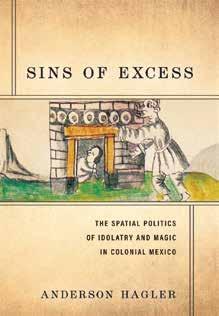
COPUBLISHED WITH AMERICAN ACADEMY OF FRANCISCAN HISTORY
JULY
$55.00x HARDCOVER 978-0-8061-9563-6
216 PAGES, 6 X 9
LATIN AMERICA/HISTORY
Of Related Interest



GÉNEROS DE GENTE IN EARLY COLONIAL MEXICO
Defining Racial Difference
By Robert C. Schwaller
$34.95x Hardcover 978-0-8061-5487-9
$26.95x Paperback 978-0-8061-6714-5
SUSTAINING THE DIVINE IN MEXICO TENOCHTITLAN
Nahuas and Catholicism, 1523–1700
By Jonathan Truitt
$45.00 x Hardcover 978-0-8061-6041-2
CHARITY FOR AND BY THE POOR
Franciscan and Indigenous Confraternities in Mexico, 1527–1700
By Laura Dierksmeier
$55.00 x Hardcover 978-0-8061-6628-5
Sins of Excess
The Spatial Politics of Idolatry and Magic in Colonial Mexico
By Anderson Hagler
For the Spanish colonizers of Mexico in the sixteenth century, the concept of “excess”—even the word itself—covered a multitude of sins, including idolatry and magic. In Sins of Excess, Anderson Hagler uses the language of excess as a lens for examining how the colonizers of New Spain conflated cultural diversity into a superficially—and usefully—homogeneous whole under the pejorative umbrella of excess in its many forms. In this way, Hagler suggests, deploying excess and its derivatives influenced how Spanish colonists came to view the practices of the Indigenous population.
In the viceroyalty of New Spain descriptive terms such as “harms and excesses” (daños y excesos) not only referred to crimes like murder and robbery (muertes y robos) but also became generalized to refer to Native religious, social, or cultural practices that fell outside the boundaries of Catholic orthodoxy. A reading of royal decrees and ecclesiastical missives, commoner testimony from criminal cases, and the trials of the Mexican Inquisition reveals a calculated rhetorical strategy that gathered non-European social-cultural experiences into a negative category. Consequently, “excess” provides an analytical framework for understanding how colonial officials interacted with Indigenous peoples and those of African descent as they attempted to impose social order.
While primary sources in non-European languages such as Nahuatl reveal a similar preoccupation with excess, Hagler reveals in this insightful book how incongruities between Nahua and Spanish interpretations of the term extended through the colonial era and generated increasing conflict.
Anderson Hagler is Assistant Professor of World Religions and Cultures at Western Michigan University. He is the author of numerous peer-reviewed articles.
How Mormon doctrine has defined and dispossessed Indigenous peoples
Mormon Settler Colonialism
Inventing the Lamanite
By Elise Boxer
According to the Book of Mormon, dissent wracked the Hebrew prophet Lehi’s family after they traveled to the Americas around 600 BC. A son, Laman, led rebellious followers who became “Lamanites,” cursed by God with a “skin of blackness.” In the nineteenth century, Joseph Smith, the first prophet of the Church of Jesus Christ of Latter-day Saints, and his followers believed Indigenous peoples to be Lamanite descendants, living in a degraded state because they no longer followed God’s commandments. In Mormon Settler Colonialism, Elise Boxer investigates the racializing ideologies perpetuated about Indigenous peoples as a result of their categorization by Mormon doctrine as Lamanites.
Boxer uses a theoretical framework of settler colonialism—in which settlers dispossess Indigenous peoples of their lands and identity—to explore how the Mormon church has used religious doctrine to define and construct Indigeneity. She examines the development of these ideas beginning with the early-nineteenth-century establishment of the LDS Church and the publication of religious texts like the Book of Mormon, which introduced the Lamanite. Boxer explores Mormon settler colonialism beginning in the mid-1800s and investigates the Indian Student Placement Program, a foster care program that placed Indigenous children in Mormon homes during the second half of the twentieth century. Boxer argues that Mormon settler colonialism persists today, evident in the recent publication of an LDS Church manual using racialized language and contestations over the proposal to remove a mural depicting Mormon settler life in a sacred, religious structure. Boxer demonstrates how Indigenous peoples have been objects of erasure by Mormon doctrine and practices as Mormon settlers, wielding their whiteness, signaling their innocence, justifying their actions, and secured their belonging through the production of Lamanite discourse.
Although the idea of the Lamanite is foundational to Mormon discourse, the formation and dissemination of this constructed identity has not been examined in broader terms of colonialism and the cultural genocide of Indigenous peoples. This provocative book deepens the intersection of Mormonism, race (Indigeneity), and colonialism in a critical and necessary direction.
Elise Boxer (Sisseton and Wahpeton Dakota, citizen of the Fort Peck Assiniboine and Sioux Tribes) is Associate Professor of History and Native American Studies at the University of South Dakota. She is co-editor of From the Skin: Defending Indigenous Nations Using Theory and Praxis.

VOLUME 25 IN THE NEW DIRECTIONS IN NATIVE AMERICAN STUDIES SERIES
OCTOBER
$45.00x HARDCOVER 978-0-8061-9604-6
240 PAGES, 6 X 9
1 B&W ILLUS.
NATIVE AMERICAN/HISTORY
Of Related Interest



LOST TRIBES FOUND
Israelite Indians and Religious Nationalism in Early America
By Matthew W. Dougherty
$39.95x Hardcover 978-0-8061-6888-3
$21.95x Paperback 978-0-8061-9227-7
DAMMING THE RESERVATION
Tribal Sovereignty and Activism at Fort Berthold
By Angela K. Parker
$45.00 x Hardcover 978-0-8061-9461-5
THE MOUND BUILDER MYTH
Fake History and the Hunt for a "Lost White Race"
By Jason Colavito
$24.95s Paperback 978-0-8061-6461-8

NEW IN PAPERBACK Under Fire and Under Water Wildfire, Flooding, and the Fight for Climate Resilience in the American West
By Bruce E. Cain
Explores the psychological, social, and institutional obstacles that have hindered decarbonization and slowed progress in dealing with extreme weather in the West
★ Winner CHOICE Outstanding Academic Title
★ Short-Listed Bonney MacDonald Award for Outstanding Western Book, Center for the Study of the American West
Epic wildfire. Devastating drought. Cataclysmic flooding. Extreme weather in the wake of climate change threatens to turn the American West into a region hostile to human habitation—a “Great American Desert,” as early US explorers once mislabeled it. As Bruce E. Cain suggests in this timely book, the unique complex of politics, technology, and logistics that once won the West must be rethought and reconfigured to win it anew in the face of a widespread accelerating threat. As a detailed look at the rising stakes and urgency of the various interconnected issues, this book is an important first step toward that understanding—and consequently toward the rethinking and reengineering that will allow people to live sustainably in the American West under the conditions of future global warming.
Bruce E. Cain is Professor of Political Science at Stanford University and Director of the Bill Lane Center for the American West. He is the author of Democracy More or Less: America’s Political Reform Quandary and coauthor of Ethnic Context, Race Relations, and California Politics.
JULY
$29.95x HARDCOVER 978-0-8061-9320-5
$21.95s PAPERBACK 978-0-8061-9646-6
166 PAGES, 5.5 X 8.5
8 CHARTS
U.S. HISTORY/ENVIRONMENT
VOLUME 16 IN THE JULIAN J. ROTHBAUM DISTINGUISHED LECTURE SERIES
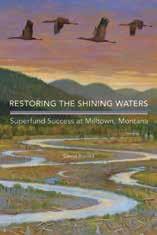
NEW IN PAPERBACK Restoring the Shining Waters Superfund Success at Milltown, Montana
By David Brooks
How a tiny community shaped Superfund policy and changed the course of U.S. environmental history
No sooner had the EPA established the Superfund program in 1980 to clean up the nation’s toxic waste dumps and other abandoned hazardous waste sites, than a little Montana town found itself topping the new program’s National Priority List. Milltown, a place too small to warrant a listing in the U.S. Census, sat alongside a modest hydroelectric dam at the confluence of the Clark Fork and Blackfoot Rivers. For three-quarters of a century, arsenic-laced waste from some of the world’s largest copper-mining operations had accumulated behind the dam. Soon, Milltown became the site of Superfund’s first dam removal and watershed restoration, marking a turning point in U.S. environmental history. The story of this dramatic shift is the tale of individuals rallying to reclaim a place they valued beyond its utility.
David Brooks is lead historian and Vice President of the Heritage Research Center in Missoula, Montana. He teaches history of the American West at the University of Montana.
OCTOBER
$34.95x HARDCOVER 978-0-8061-4472-6
$24.95s PAPERBACK 978-0-8061-9639-8
280 PAGES, 6 X 9
17 B&W ILLUS., 1 MAP U.S. HISTORY/ENVIRONMENT
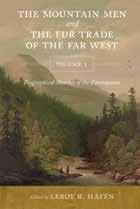
The Mountain Men and the Fur Trade of the Far West, Volume 1
Biographical sketches of the participants by scholars on the subjects and with introductions by the editor
Edited by LeRoy R. Hafen
Mountain men were the principal figures of the fur trade era, one of the most interesting, dramatic, and truly significant phases of the history of the American trans-Mississippi West during the first half of the 19th century. Included in Volume 1 are the biographies of Manuel Alvarez; Abel Baker; Jean Baptiste Charbonneau; Francis A. Chardon; Henry Chatillon; James Clyman; Alexander Culbertson; Jimmy Daugherty; Job Frances Dye; Thomas Eddie; Gabriel Franchere; Mark Head; Charles Larpenteur; Joseph L. Meek; George Nidever; Hiram Scott; Isaac Slover; Pinckney W. Sublette; Solomon P. Sublette; and Charles Town.
LeRoy R. Hafen (1893–1985) was Professor of History at the University of Denver and Brigham Young University, Executive Director of the State Historical Society of Colorado, and author/editor of numerous books on the American West.
AUGUST
$24.95x PAPERBACK 978-0-8061-9605-3
410 PAGES, 6 X 9
HISTORY/BIOGRAPHY
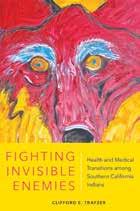
Fighting Invisible Enemies
Health and Medical Transitions
among Southern California Indians
By Clifford E. Trafzer
Native Americans long resisted Western medicine—but had less power to resist the threat posed by Western diseases. And so, as the Office of Indian Affairs reluctantly entered the business of health and medicine, Native peoples reluctantly began to allow Western medicine into their communities. Fighting Invisible Enemies traces this transition among inhabitants of the Mission Indian Agency of Southern California from the late-nineteenth through the mid-twentieth century. The first study of its kind, Trafzer’s work fills gaps in Native American, medical, and Southern California history. It informs our understanding of the working relationship between Indigenous and Western medical traditions and practices as it continues to develop today.
Clifford E. Trafzer is Distinguished Professor of History at the University of California, Riverside.
SEPTEMBER
$34.95x HARDCOVER 978-0-8061-6286-7
$24.95x PAPERBACK 978-0-8061-9637-4
392 PAGES, 6 X 9
41 B&W ILLUS., 4 MAPS, 6 TABLES NATIVE AMERICAN/HISTORY

Frontiers of Evangelization
Indians in the Sierra Gorda and Chiquitos Missions
By Robert H. Jackson
The Spanish crown wanted Native peoples in its American territories to be evangelized and, to that end, facilitated the establishment of missions by various Catholic orders. Focusing on the Franciscan missions of the Sierra Gorda in Northern New Spain (Mexico) and the Jesuit missions of Chiquitos in what is now Bolivia, Frontiers of Evangelization takes a comparative approach to understanding the experiences of Indigenous populations in missions on the frontiers of Spanish America.
Robert H. Jackson is an independent historian who has published extensively on Latin America and the Southwest Borderlands. Among his many titles are Race, Caste, and Status: Indians in Colonial Spanish America; Indian Population Decline: The Missions of Northwestern New Spain, 1687–1840; and From Savages to Subjects: Missions in the History of the American Southwest.
AUGUST
$36.95x HARDCOVER 978-0-8061-5772-6
$24.95x PAPERBACK 978-0-8061-9458-5
212 PAGES, 6 X 9
24 B&W ILLUS., 2 MAPS, 23 TABLES, 2 GRAPHS LATIN AMERICA
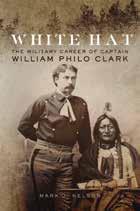
White Hat
The Military Career of Captain William Philo Clark
By Mark J. Nelson
Best known for his role in the arrest and killing of Crazy Horse and for his book, The Indian Sign Language, Captain William Philo Clark was one of the Old Army’s renaissance men, by turns administrator, fighter, diplomat, explorer, and ethnologist. Clark found himself at center stage during some of the most momentous events of the post–Civil War West. White Hat illuminates the history of the nineteenth-century American military and the Great Plains.
Mark J. Nelson has served on the staff of museums and historical sites across the American West, including Fort Bridger, the Little Bighorn Battlefield National Monument, and the Nebraska State Historical Society.
OCTOBER
$29.95x HARDCOVER 978-0-8061-6122-8
$24.95x PAPERBACK 978-0-8061-9641-1
280 PAGES, 6 X 9
12 B&W ILLUS., 1 MAP
MILITARY HISTORY/U.S. HISTORY

Emory Upton
Misunderstood Reformer
By David J. Fitzpatrick
Emory Upton is widely recognized as one of America’s most influential military thinkers. His works—The Armies of Asia and Europe and The Military Policy of the United States—fueled the army’s intellectual ferment in the late nineteenth century and guided Secretary of War Elihu Root’s reforms in the early 1900s. Yet as Fitzpatrick contends, Upton is also widely misunderstood as an antidemocratic militaristic zealot. In this first full biography in nearly half a century, Fitzpatrick, the leading authority on Upton, radically revises our view of this important figure in American military thought.
David J. Fitzpatrick is Professor of History at Washtenaw Community College in Ann Arbor, Michigan. His articles have been published in the Journal of Military History
AUGUST
$39.95x HARDCOVER 978-0-8061-5720-7
$24.95x PAPERBACK 978-0-8061-9636-7
344 PAGES, 6 X 9
15 B&W ILLUS., 4 MAPS
BIOGRAPHY/MILITARY HISTORY
VOLUME 60 IN THE CAMPAIGNS AND COMMANDERS SERIES
NEW IN PAPERBACK
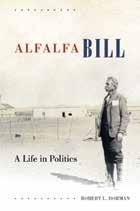
Alfalfa Bill A Life in Politics
By Robert L. Dorman
In this masterful biography, Robert L. Dorman traces the career of William H. “Alfalfa Bill” Murray from his hardscrabble childhood in post–Civil War Texas to his remarkable ascendancy as a nationally known political figure in the mid-twentieth century. The first comprehensive portrait of Murray to be published in fifty years, Alfalfa Bill is both the exploration of a larger-than-life personality and an illuminating account of the birth of political conservatism in Oklahoma.
Robert L. Dorman is Professor of Library Science at Oklahoma City University and the author of several books, including Revolt of the Provinces: The Regionalist Movement in America, 1920–1945.
OCTOBER
$34.95x HARDCOVER 978-0-8061-6035-1
$24.95s PAPERBACK 978-0-8061-9643-5
436 PAGES, 6.14 X 9.21
20 B&W ILLUS.
BIOGRAPHY/U.S. HISTORY

Assault on the Deadwood Stage
Road Agents and Shotgun Messengers
By Robert K. DeArment
Foreword by
Joseph G. Rosa
In the 1870s, Deadwood was a thriving— and largely lawless—boomtown. And as any fan of western history and films knows, stagecoach robberies were a regular feature of life in this fabled region of Dakota Territory. Now, for the first time, Robert K. DeArment tells the story of the "good guys and bad guys" behind these violent crimes: the road agents who wreaked havoc on Deadwood's roadways and the shotgun messengers who battled to protect stagecoach passengers and their valuable cargo.
Robert K. DeArment was a University of Toledo, Ohio, graduate whose research and writing focused on nineteenthcentury American history, especially outlaws and law enforcement in the frontier West.
AUGUST
$24.95x HARDCOVER 978-0-8061-4182-4
$21.95x PAPERBACK 978-0-8061-9460-8
296 PAGES, 5.5 X 8.5
30 B&W ILLUS.
HISTORY/BIOGRAPHY

Tombstone, Deadwood, and Dodge City
Re-creating the Frontier West
By Kevin Britz and Roger L. Nichols
The Wild West may be long gone, but its legend lives on in Tombstone, Arizona; Deadwood, South Dakota; and Dodge City, Kansas. Britz and Nichols conduct a tour of these iconic towns, revealing how they became repositories of western America’s defining myth. Beginning with the founding of the communities in the 1860s and 1870s, this book traces the circumstances that shaped the settlements over the course of a century.
Kevin Britz (1954–2011) received his PhD in history from the University of Arizona under the direction of Roger L. Nichols. Roger L. Nichols is Professor Emeritus of History and Affiliate Professor of American Indian Studies at the University of Arizona.
SEPTEMBER
$32.95x HARDCOVER 978-0-8061-6029-0
$24.95s PAPERBACK 978-0-8061-9638-1
284 PAGES, 6 X 9
25 B&W ILLUS., 1 MAP
U.S. HISTORY
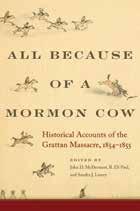
All Because of a Mormon Cow
Historical Accounts of the Grattan Massacre, 1854–1855
Edited by John D. McDermott, R. Eli Paul and Sandra J. Lowry
On August 19, 1854, U.S. Army lieutenant John L. Grattan led a detachment of soldiers and one civilian interpreter to a Lakota encampment near Fort Laramie to arrest an Indian man accused of killing a Mormon emigrant’s cow. The terrible series of events that followed, which became known as the Grattan Massacre, and marked the beginning of a generation of Indian warfare on the Great Plains. All Because of a Mormon Cow tells the full story of this seminal event.
John D. McDermott (1935–2016) was a historian and administrator with the National Park Service and the President’s Advisory Council on Historic Preservation. R. Eli Paul heads the Missouri Valley Special Collections at the Kansas City Public Library, Kansas City, Missouri. Sandra J. Lowry (1943–2016) was a librarian for more than thirty years in the Research Library at the Fort Laramie National Historic Site.
SEPTEMBER
$29.95x HARDCOVER 978-0-8061-6153-2
$24.95x PAPERBACK 978-0-8061-9642-8
240 PAGES, 6 X 9
13 B&W ILLUS., 1 MAP
U.S. HISTORY
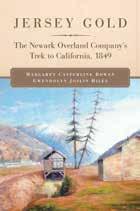
Jersey Gold
The Newark Overland Company's Trek to California, 1849
By Margaret Casterline Bowen and Gwendolyn Joslin Hiles
When gold fever struck in 1849, John S. Darcy—prominent physician, general, and president of the New Jersey Railroad—assembled a company to travel overland to California. In Jersey Gold, Margaret Casterline Bowen and Gwendolyn Joslin Hiles tell the story of that colorful company of some thirty stalwarts and adventurers. Jersey Gold chronicles the experiences of the New Jersey argonauts from their lives before the gold rush to the widely varying fortunes each ultimately found.
Margaret Casterline Bowen, a former IT manager and consultant for the U.S. House of Representatives and the Centers for Disease Control and Prevention, resides in Jefferson, Maryland.
Gwendolyn Joslin Hiles, from Lewis Center, Ohio, owned a commercial printing company after a career in educational and children’s publishing.
NOVEMBER
$34.95x HARDCOVER 978-0-8061-5714-6
$24.95s PAPERBACK 978-0-8061-9640-4
388 PAGES, 6 X 9
36 B&W ILLUS., 4 MAPS
U.S. HISTORY
NEW IN PAPERBACK
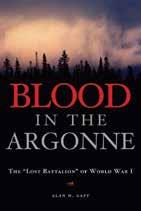
Blood in the Argonne
The "Lost Battalion" of World War I
By Alan D. Gaff
In this unique history of the “Lost Battalion” of World War I, Alan D. Gaff tells for the first time the story of the 77th Division from the perspective of the soldiers in the ranks. Gaff draws from new, unimpeachable sources— such as sworn testimony by soldiers who survived the ordeal—to correct the myths and legends and to reveal what really happened in the Argonne Forest during early October 1918.
Alan D. Gaff is an independent scholar and the author of several books.
SEPTEMBER
$26.95x HARDCOVER 978-0-8061-3696-7
$24.95x PAPERBACK 978-0-8061-9634-3
384 PAGES, 6 X 9
50 B&W ILLUS., 3 MAPS
MILITARY HISTORY
VOLUME 8 IN THE CAMPAIGNS AND COMMANDERS SERIES
NEW IN PAPERBACK
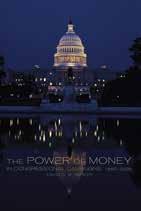
The Power of Money in Congressional Campaigns, 1880–2006
By David C. W. Parker
The Power of Money in Congressional Campaigns examines the historical development of party, interest-group, and candidate power in the American congressional election process. Parker takes a broad view of the electoral terrain, considering both primary and general elections, and discerns distinct patterns emerging during the twentieth century. He proposes a new theoretical model based on the need for candidates to accumulate enough financing and reputation to compete successfully, showing the importance of the rules governing this process.
David C. W. Parker is a lecturer in the Department of Political Science at the University of Wisconsin–Madison, and a retired professor of political science at Montana State University. He is also the author of Battle of the Big Sky: Representation and the Politics of Place in Race for the U.S. Senate.
AUGUST
$24.95x PAPERBACK 978-0-8061-9464-6
294 PAGES, 6 X 9
POLITICAL SCIENCE
VOLUME 6 IN THE CONGRESSIONAL STUDIES SERIES

TULSA, 2021
A Massacre's Centennial and a Nation's Reckoning
By Randy Krehbiel
$29.95 HARDCOVER
978-0-8061-9532-2
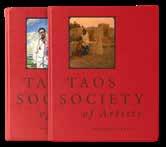
TAOS SOCIETY OF ARTISTS
Edited by Peter H. Hassrick, Gerald P. Peters, and Melissa W. Speidel
$250.00 x HARDCOVER, TWO-VOLUME SET
978-0-8061-9494-3

MAKING WRITING MEANINGFUL
A Guide for Higher Education
By Michele Eodice, Anne Ellen Geller, and Neal Lerner
$95.00 x HARDCOVER
978-0-8061-9533-9
$19.95s PAPERBACK
978-0-8061-9534-6

MARKING NATIVE BORDERS
Indigenous Geography and American Empire in the Early Tennessee Country
By Lucas P. Kelley
$45.00 x HARDCOVER
978-0-8061-9541-4

SOONER DOUGHBOYS WRITE HOME
The University of Oklahoma and World War I
Edited by David W. Levy
$29.95s HARDCOVER
978-0-8061-9527-8

BIG SKIES, WHITE HOODS
The 1920s Klan and a History of Hate in Montana
By Christine Kimberly Erickson
$34.95x HARDCOVER
978-0-8061-9537-7

WHEN MONTANA OUTRACED THE EAST
The Reign of Western Thoroughbreds, 1886–1900
By Catharine Melin-Moser
$34.95s HARDCOVER
978-0-8061-9531-5

OSAGE LANGUAGE AND LIFEWAYS
By Cameron Pratt, Stephanie Rapp, Marcia Haag, and Dylan Herrick
$65.00 x HARDCOVER
978-0-8061-9529-2
$29.95x PAPERBACK
978-0-8061-9562-9

LOW APRIL SUN
A Novel
By Constance E. Squires
$26.95 HARDCOVER
978-0-8061-9474-5

THE OPPOSITE OF CHEATING Teaching for Integrity in the Age of AI
By Tricia Bertram Gallant and David A. Rettinger
$95.00 x HARDCOVER
978-0-8061-9495-0
$24.95s PAPERBACK
978-0-8061-9496-7

THE PURIFYING KNIFE
The Troubling History of Eugenics in Texas
By Michael Phillips and Betsy Friauf
$36.95x HARDCOVER
978-0-8061-9536-0

PEYOTE POLITICS
The Making of the Native American Church, 1880–1937
By Lisa D. Barnett
$45.00 x HARDCOVER
978-0-8061-9538-4

HERO OF FORT SUMTER
The Extraordinary Life of Robert Anderson
By Wesley Moody
$36.95s HARDCOVER
978-0-8061-9540-7

CHEROKEE NATION CITIZENSHIP
A Political History
By Aaron Kushner
$45.00 x HARDCOVER
978-0-8061-9475-2

RHINO TANKS AND STICKY BOMBS
GI Ingenuity in World War II
By Robert P. Wettemann Jr.
$42.95x HARDCOVER
978-0-8061-9539-1
UNIVERSITY OF OKLAHOMA PRESS 2800 VENTURE DRIVE, NORMAN, OKLAHOMA 73069 1 800 848 6224 EXT.1 | OUPRESS.COM
UNIVERSITY OF OKLAHOMA PRESS IS DISTRIBUTED THROUGH LONGLEAF SERVICES, INC.
ORDERS AND CUSTOMER SERVICE
800-848-6224 EXT. 1 OR 919-966-7449
FAX ORDERS
800-272-6817 OR 919-962-2704
EMAIL ORDERS
ORDERS@LONGLEAFSERVICES.ORG
EMAIL INQUIRIES
CUSTOMERSERVICE@LONGLEAFSERVICES.ORG
ELECTRONIC ORDERS
EDI FOR B & T, B&N, AND AMAZON (VAN: ICC ID: 2033151ICC) AND PUBNET (SAN 20331)
SALES REPRESENTATIVES
UNITED STATES
Oklahoma, Texas, and the South Bill McClung & Associates
20540 State Hwy 46w, Suite 115 Spring Branch, TX 78070
Phone: 888-813-6563
Fax: 888-311-8932
Alabama, Arkansas, Florida, Georgia, Louisiana, Mississippi, North Carolina, Oklahoma, South Carolina, Tennessee, Texas, and Virginia
Bill McClung
Phone: 214-505-1501
bmcclung@ix.netcom.com
Terri McClung
Phone: 214-676-3161
tmcclung@ix.netcom.com
MIDWEST
Abraham Associates 210 Edge Place
Minneapolis MN 55418
Phone: 800-701-2489
Fax: 952-927-8089
info@aabookreps.com
Ted Seykora, Office Manager ted@abrahamassociatesinc.com
Minnesota
Stuart Abraham
Phone: 952-927-7920
stu@abrahamassociatesinc.com
Iowa, Kansas, Minnesota, Missouri, North Dakota, Wisconsin
Emily Johnson
Phone: 952-927-7920 emily@abrahamassociatesinc.com
Iowa, Illinois, Kentucky, Wisconsin
John Mesjak
Phone: 815-762-0598
john@abrahamassociatesinc.com
Alice Mesjak
Phone: 779- 777-0190 alice@abrahamassociatesinc.com
Illinois, Indiana, Michigan, Ohio Sandra Law
Phone: 630-352-8640 sandra@abrahamassociatesinc.com
SHIPPING
Domestic (U.S.)
$6.00 for the first book, $1.00 for each additional book for standard shipping International
$10.00 for first book, $6.00 for each additional book RETURNS
Permission to return overstock is not required provided books are returned within eighteen months of sale. Books must be clean, undamaged, and saleable copies of titles currently in print as listed on our website. Full credit is allowed if the customer supplies a copy of the original invoice or the correct invoice number; otherwise maximum discount applies. Please send books prepaid and carefully packed via traceable method to:
Longleaf Services, Inc.
c/o IPS Distribution Solutions Returns 1550 Heil Quaker Blvd Ste 200 LaVergne, TN 37086
DISCOUNT SCHEDULE
Resale and wholesale customers: Prices are subject to change without notice. An “s” next to a price denotes a short discount; an “x” denotes an academic/text discount. Otherwise all books carry the full trade discount.
BULK PURCHASES, WHOLESALERS, SPECIALTY RETAILERS, SPECIAL SALES
Contact Katie Baker, Director of Sales and Marketing 405-325-3200
Fax: 405-325-4000
email: katie-baker@ou.edu
MEDIA, REVIEW COPIES, AND AUTHOR APPEARANCES
Contact Katie Baker, Director of Sales and Marketing 405-325-3200
Fax: 405-325-4000
email: katie-baker@ou.edu
RIGHTS AND PERMISSIONS
Contact Shannon Gering email: rights.oupress@ou.edu
Fax: 405-325-4000
EXAMINATION AND DESK COPIES
Please visit oupress.com for details on how to request an examination or desk copy.
The University of Oklahoma is an equal opportunity institution. www.ou.edu/eoo
WEST
Wilcher Associates
26652 Merienda #7 Laguna Hills, CA 92656 949-362-0597 Phone 949-643-2330 Fax
Colorado, Idaho, Montana, Nebraska, New Mexico, South Dakota, Utah, Wyoming
Jim Sena & Associates
Jim Sena
Phone: 719-210-5222
sena.wilcher@gmail.com
Northern California (Bay Area & Coastal areas)
Richard McNeace Phone: 323-273-7763 richard@fahertybooks.com
Oregon, Washington Joseph Tremblay Phone: 503-490-3141 joe@fahertybooks.com
Northern California (Sacramento, Davis, Central Valley & Sierras) Trevin Matlock Phone: 909-263-2346 trevin@fahertybooks.com
Alaska, Arizona, Hawaii, Nevada, Southern California
Tom McCorkell Phone: 949-362-0597 tmccork@sbcglobal.net
Connecticut, Delaware, Maine, Maryland, Massachusetts, New Hampshire, New Jersey, New York, Pennsylvania, Rhode Island, Vermont, Washington, D.C. University Marketing Group 675 Hudson Street, #4N New York, NY 10014
David Brown
Phone: 212-924-2520 Fax: 212-924-2505 davkeibro@icloud.com
CANADA
Orders and Returns: University of Toronto Press (UTP) Distribution 5201 Dufferin St · Toronto, ON · M3H 5T8 · CANADA
Telephone: 1-800-565-9523 Fax: 1-800-221-9985 utpbooks@utpress.utoronto.ca
Sales Representation Ampersand – Head Office Suite 213
321 Carlaw St., Toronto, ON · M4M 2S1 · Canada
Toll Free: 866-736-5620 Fax: 866-849-3819
THE CARIBBEAN, CENTRAL AND SOUTH AMERICA
Craig Falk Phone: 301-838-9276 craigfalk@aya.yale.edu
INTERNATIONAL
UK, continental Europe, Middle East, Africa, and Asia Mare Nostrum Group 39 East Parade Harrogate North Yorkshire HG1 5LQ United Kingdom
Trade Orders & Enquiries: Phone: +44 (0) 1243 843291 trade@wiley.com
Rorie Eunson
Senior Marketing Executive Phone: +44 (0) 1423 562232
Email: RorieEunson@ mare-nostrum.co.uk
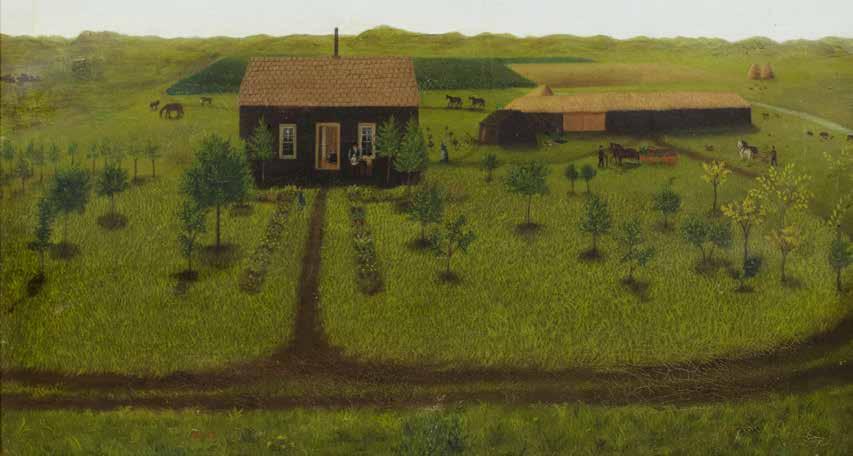
A Adamson, Projecting America, 6 Alfalfa Bill, Dorman, 24
All Because of a Mormon Cow, McDermott/Paul, Lowry, 25 Assault on the Deadwood Stage , DeArment, 25
B Beebe/Senkewicz, Write Long Beautiful Letters, 19
Behold the Walls, Luper, 10 Bender/Belt, The New Voice of God, 9 Between Loving and Leaving, Lauck, 4 Black Wests, Gallagher, 5 Blood in the Argonne , Gaff, 26 Bowen/Hiles, Jersey Gold, 26 Boxer, Mormon Settler Colonialism, 21 Britz/Nichols, Tombstone, Deadwood, and Dodge City, 25 Brooks, Restoring the Shining Waters, 22
C Cain, Under Fire and Under Water, 22 California Camera Club, The , Görgen, 2,3 Chaco Series, Gaston/Tuwaletstiwa, 14
Collecting the “Other Americas,” Lyall/Hoobler, 15
Color Coded, Nugent, 18
Cowell, Making Each Other Laugh, 7
D DeArment, Assault on the Deadwood Stage , 25
Dorman, Alfalfa Bill, 24
E
Eaton, A History of the Cherokee Nation, 8
Emory Upton, Fitzpatrick, 24 Empowered, Pittman, 17
Ethanol, Manuel/Rogers, 13
F
Fighting Invisible Enemies, Trafzer, 23
Friesen, Lakota Performers in Europe , 11 Frontiers of Evangelization, Jackson, 23 G
Gaff, Blood in the Argonne , 26
Gallagher, Black Wests, 5
Gaston/Tuwaletstiwa, Chaco Series, 14
Görgen, The California Camera Club, 2,3
H
Hafen, The Mountain Men and the Fur Trade of the Far West, Volume 1, 23
Hagler, Sins of Excess, 20
History of the Cherokee Nation, A , Eaton, 8
J
Jackson, Frontiers of Evangelization, 23
Jackson, The Man Who Dammed
Hetch Hetchy, 12
Jersey Gold, Bowen/Hiles, 26
L
Lakota Performers in Europe , Friesen, 11
Lauck, Between Loving and Leaving, 4
Luper, Behold the Walls, 10
Lyall/Hoobler, “Collecting the “Other Americas,” 15
MMcDermott/Paul/Lowry, All Because of a Mormon Cow, 25 McInnis, Women of Empire , 11 Making Each Other Laugh, Cowell, 7 Man Who Dammed Hetch Hetchy, The , Jackson, 12 Manuel/Rogers, Ethanol, 13
Mormon Settler Colonialism, Boxer, 21 Mountain Men and the Fur Trade of the Far West Volume 1, The , Hafen, 23
N
Nelson, White Hat, 24
Neuhaus, Snafu Edu, 16 New Voice of God, The , Bender/Belt, 9 Nugent, Color Coded, 18 P
Pagán, Valley of the Guns, 10 Parker, The Power of Money in Congressional Campaign, 1880-2006, 26 Pittman, Empowered, 17 Power of Money in Congressional Campaigns, 1880-2006, The , Parker, 26 Projecting America, Adamson, 6 R
Regionalists on the Left, Steiner, 18
Restoring the Shining Waters, Brooks, 22
S Sins of Excess, Hagler, 20 Snafu Edu, Neuhaus, 16 Steiner, Regionalists on the Left, 18
TTombstone, Deadwood, and Dodge City, Britz/Nichols, 25
Trafzer, Fighting Invisible Enemies, 23
U
Under Fire and Under Water, Cain, 22 V
Valley of the Guns, Pagán, 10 W
White Hat, Nelson, 24
Women of Empire , McInnis, 11 Write Long and Beautiful Letters, Beebe/Senkewicz, 19
ABOVE: SALLY COVER, THE HOMESTEAD OF ELLSWORTH BALL, 1880S. OIL ON CANVAS, 19 ½ X 23 IN. NEBRASKA STATE HISTORICAL SOCIETY.
2800 VENTURE DRIVE, NORMAN, OKLAHOMA 73069
1 800 848 6224 EXT.1 | OUPRESS.COM
